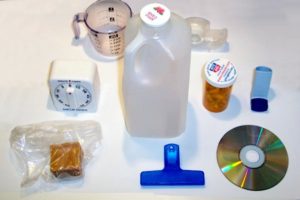
If you already suspected that we are surrounded by toxic chemicals in our homes - yes, your suspicions are true. A new study found that toxic flame retardants are in many household items that we use daily, specifically black plastic items (e.g., kitchen utensils, toys, takeout containers). That's because black plastic items tend to include recycled plastics.
In the study the researchers tested 230 store-bought items in the Seattle area for flame retardants, and found flame retardants in 85% of them. All the tested items were of black plastic or had black plastic somewhere in them (e.g., underside of toy cars). Showing that the flame retardants are pervasive, the 10 items with the highest levels of flame retardants were a sushi tray, toy car, peeler, travel checkers set, toy beads, and other kitchen utensils.
The problem with recycled plastics is that much of it comes from plastic that originally had flame retardants and other toxic chemicals added to it, for example electronics and electric products. When these recycled plastics are added to ordinary household items, the original toxic chemicals are in them, and now the consumer gets exposed to them. For example, in food utensils, toys, takeout containers, office supplies, and more. These items do NOT need flame retardants in them.
The study found that up to 2.3% of the weight of the household products were flame retardants. Some of the chemicals they found have been phased out, but are still winding up in recycled plastic. Studies show that flame retardants migrate from cooking utensils into food, and from toys into saliva. These chemicals are linked to cancers, endocrine and reproductive problems, and other health problems. Also, they tend to bioaccumulate in the environment and in people. Yikes!
Bottom line: At this point try to avoid black plastic items or items with some black plastic, especially in toys, food containers, and kitchen/household products. Right now view all "recycled plastic" items as problematic and to be avoided.
From Medical Xpress: From kitchenware to toys, household items linked to toxic flame retardants
From toys to kitchenware to food takeout trays, researchers have discovered a toxic chemical banned for its link to cancer in many common household items. Exposure to the flame retardant can come with serious health risks. ...continue reading "Many Household Items Contaminated With Flame Retardants"

